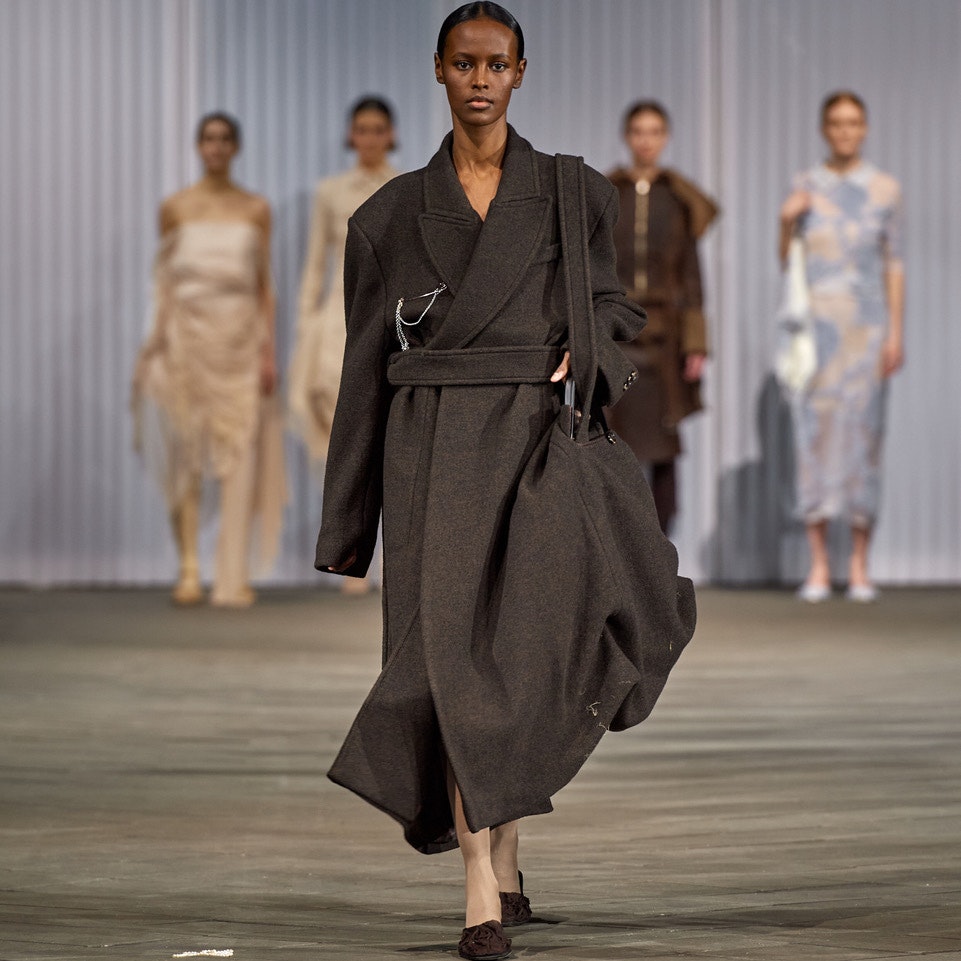Textile Exchange Conference: Copenhagen Fashion Week's highlights

In late October, CPHFW joined the Textile Exchange Conference, connecting with industry leaders for insights and inspiration through panels, keynotes, and networking.
In the last week of October, Copenhagen Fashion Week attended the annual Textile Exchange Conference in London. At the event, leaders and experts from across the fashion, textile, and apparel industry gathered to explore collaborative solutions to present and future challenges for the industry. The conference days were packed with panels, keynote presentations and networking, providing CPHFW with new insights and inspiration.
The power of collaboration was spotlighted in several panel discussions and keynote presentations. For instance, partnerships such as the one between Veja and Bergman Rivera showcase how providing financial security to farmers with long-term contracts and/or loans, build relationships that empower farmers in shifting to regenerative agriculture The general representation of farmers also showed the importance of building strong relationships within the supply chain while highlighting the fact that the climate crisis is a big threat to farmers' livelihoods and in the long run, to the fashion industry as a whole. It should therefore be in the industry’s interest to secure environmental and social goals and understand the power of collaboration to not only build knowledge but also to invest in regenerative farming, preferred material production and resilient supply chains.
In terms of fibre sourcing and the environmental challenges, keynote presentations from the conference shared insights from newly launched reports and practical guidance from open-sourced tools such as:
- In a report co-authored by BCG, Textile Exchange and Quantis predictions show an immense material gap in 2030. To reach shared global targets related to raw materials and fibres and to comply with upcoming legislation, lower-impact material sourcing is crucial but the predictions show insufficient development and investments to support the increasing demand. As such, the demand-and-supply gap will rise to as much as 133 million tons in 2030. Presented in the report, to guide brands how to close the materials gap, the Materials Manifesto shares six principles with a dedicated focus on brand materials’ strategies.
- “Around 24% of the greenhouse gas impact occurs at the raw materials stage of the supply chain” is noted on the presentation page for Textile Exchange’s open-source Materials Impact Explorer. A tool for brands to identify the potential risks and opportunities associated with the fibres and raw materials in their portfolios, alongside tailored recommendations on mitigating risk, reducing environmental impact, and supporting local and global sustainability initiatives.
- Fashion depends on nature and the World Economic Forum recoginses biodiversity loss as the fourth-biggest long-term global risk. The fashion industry must acknowledge their impact on biodiversity while urgently acting on protecting and restoring nature. The Biodiversity Landscape Analysis, by Textile Exchange and the Fashion Pact, in partnership with Conservation International and supported by Biodiversify, focuses on raw materials produced in agricultural systems by consolidating and condensing the wealth of tools, methods, frameworks, and standards available to support biodiversity action in the industry.
Collaboration and action is the core of Textile Exchange work and memberships. For brands within CPHFW network, find out more on the membership benefits and how you can join over 800 brands, manufacturers, farmers, retailers, and others committed to climate action toward more purposeful production from the very start of the supply chain.



